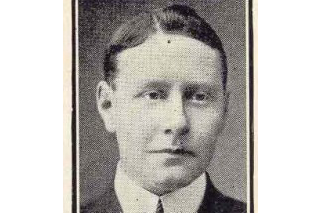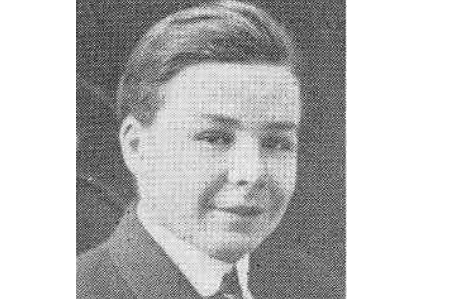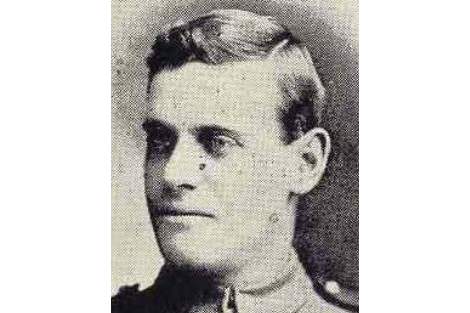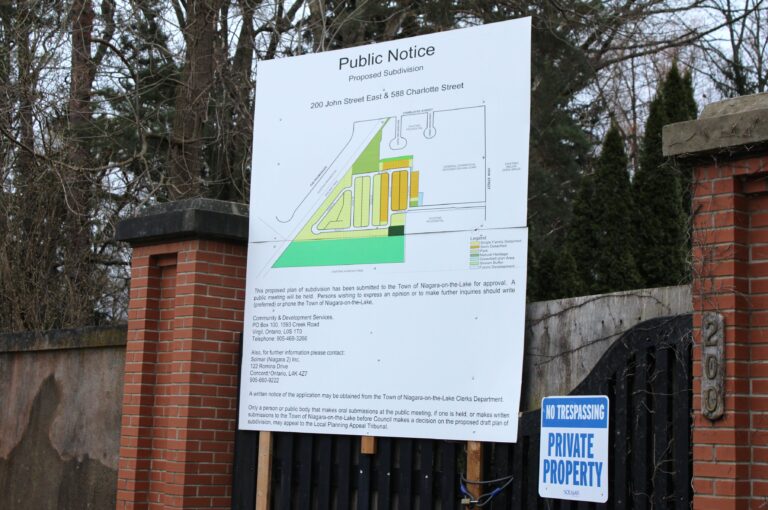This month marks the 100th anniversary of Niagara-on-the-Lake’s iconic clock tower cenotaph. In recognition of the cenotaph’s century of service through two world wars and beyond, NOTL historian Ron Dale has been researching the stories of the people – all men – whose names are engraved on it. This is one in a series of stories to document and remember the sacrifices these combatants made. Future instalments will commemorate those named on the Queen Street cenotaph and on the municipal memorial in Queenston.
Ron Dale
Special to The Lake Report
When men enlisted for overseas service in the Canadian Expeditionary Force in the First World War, they knew that they were heading into danger.
Most men expected to survive, thinking that there was not a bullet “with their name on it” and that artillery shells would target other men. Front-line duty would dash that optimism.
Most soldiers continuously feared their time would be up in the next “over the top” attack or while crouched in a muddy trench while German shells exploded all around.
More than half a million Canadian men and women volunteered to serve in the First World War. Three Niagara men were eager to serve but would not live long enough to experience the terrors of service at the front or see the war through to final victory.
Gordon Blake Ryan was a bank clerk in Niagara-on-the-Lake, where his parents ran a grocery store. The First World War had been raging for a year when he, along with other young bank employees, decided to enlist.
Ryan was able to walk over to a Canadian army recruitment centre at Niagara Camp. He signed his attestation papers on Sept. 20, 1915, and became a bugler in the 92nd Battalion, Canadian Expeditionary Force.
Soon after enlisting, Ryan was sent to Toronto to undergo training at the large camp set up on the Toronto Exhibition grounds. It is of interest to note that the “Ex,” cancelled during the COVID pandemic, continued to be held yearly during the First World War.
During the fair, the soldiers moved out of their billets to sleep under canvas while their barracks reverted to their original function as stalls for livestock. Ryan, however, did not get the opportunity to enjoy this iconic late-summer event.
He was admitted to the military hospital with a bad case of measles and influenza on Jan. 21, 1916. Far from improving, his condition became worse.
He soon developed pneumonia and died on the morning of Jan. 31. He now rests in St. Mark’s Cemetery.
According to writer Catherine Creed, who was at the funeral, “His body was brought home and a public funeral held that his townspeople might pay their last respects to one who had always commanded the respect of all. His young friends came from Toronto, Hamilton, St. Catharines, many of them in khaki. The home guard from Butler’s Barracks provided the firing party and sent as many men as possible.”
Private Robert Follet Best’s funeral, late in the war, was not so elaborate.
Best was born in Niagara-on-the-Lake on Febr. 4, 1901. His father died in 1912 but he and his mother and sisters continued to live in town.
Robert Best attended the Niagara-on-the-Lake High School, now part of the NOTL Museum, but by 1918 he and his mother were living in Toronto where Robert completed his education.
He attempted to enlist in both the army and the navy. He was turned down in one case due to his young age and in the other because of his poor eyesight.
He tried again on Jan. 19, 1918, two weeks before his 17th birthday but he told the recruiting officer at the Toronto Exhibition military camp that he was born in 1899. He was accepted, even though he appeared much too young.
Best was posted to the 2nd Battalion of the 1st Central Ontario Regiment, a unit that served as a garrison or home service unit. He received some very basic training before his brief military career ended.
He reported ill on Feb. 10 but was initially charged with malingering, The following day he collapsed in his barracks and was admitted to the CNE Base Hospital. A week later he was dead, struck down by spinal meningitis, two weeks after his 17th birthday.
Best was buried in the family plot at St. Mark’s in Niagara-on-the-Lake.
Walter Langdon Nisbet was born in the Town of Niagara in January 1880 and served in the Boer War from 1900 to 1902 and in the South African Constabulary, before returning to Niagara in 1906.
When the First World War broke out Nisbet went on active home service with the 44th Regiment, guarding the Welland Canal and the hydro generating stations in Niagara Falls.
While on duty he became ill, dying of tuberculosis on May 23, 1915. He was buried at the Niagara-on-the-Lake United Church.
These men, commemorated on the NOTL clock tower cenotaph, expected their lives would be in danger from active service against Canada’s enemies. Death, however, came stalking in another form.












